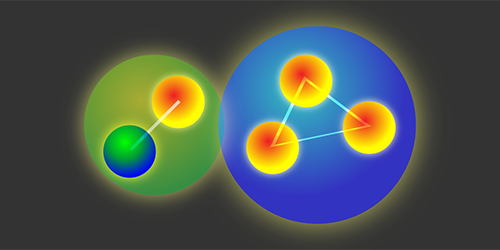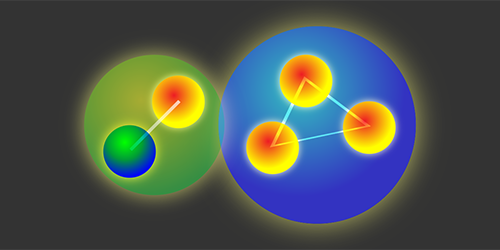How a Pentaquark is Put Together
Particles consisting of either three quarks or quark-antiquark pairs are some of the more familiar members of the standard model, but theory also predicts the existence of other exotic combinations. In 2016, relying on data from the Large Hadron Collider (LHC), the LHCb Collaboration spotted the signature of one long-sought example: a pentaquark, comprising four quarks and one antiquark (see 18 August 2016 Synopsis). Now, the same team reports that pentaquarks are formed by attractive forces between a three-quark baryon and a quark-antiquark meson, binding them loosely into a “molecular” state.
While the original pentaquark detection had high statistical confidence, it wasn’t clear how the component quarks were organized. Quantum chromodynamics—the theory that describes how quarks interact—allows for several possibilities, including a tightly bound quark quintet, composites of various species of baryons and mesons, or even a fleeting interaction between simpler particles and their decay products.
With new LHC results, the team had access to more than 9 times as much data as was used to make the initial pentaquark discovery. The larger dataset revealed that one of the particle types observed three years ago is actually two separate pentaquarks with nearly identical masses. The masses of these particles—along with a newly discovered lower-mass pentaquark—correspond closely with the masses of three candidate baryon-meson pairings.
While it’s possible that these masses could emerge by chance with other pentaquark architectures, the researchers say that such a match would be coincidental—though more experiments are needed before they know for sure.
This research is published in Physical Review Letters.
–Marric Stephens
Marric Stephens is a freelance science writer based in Bristol, UK.





